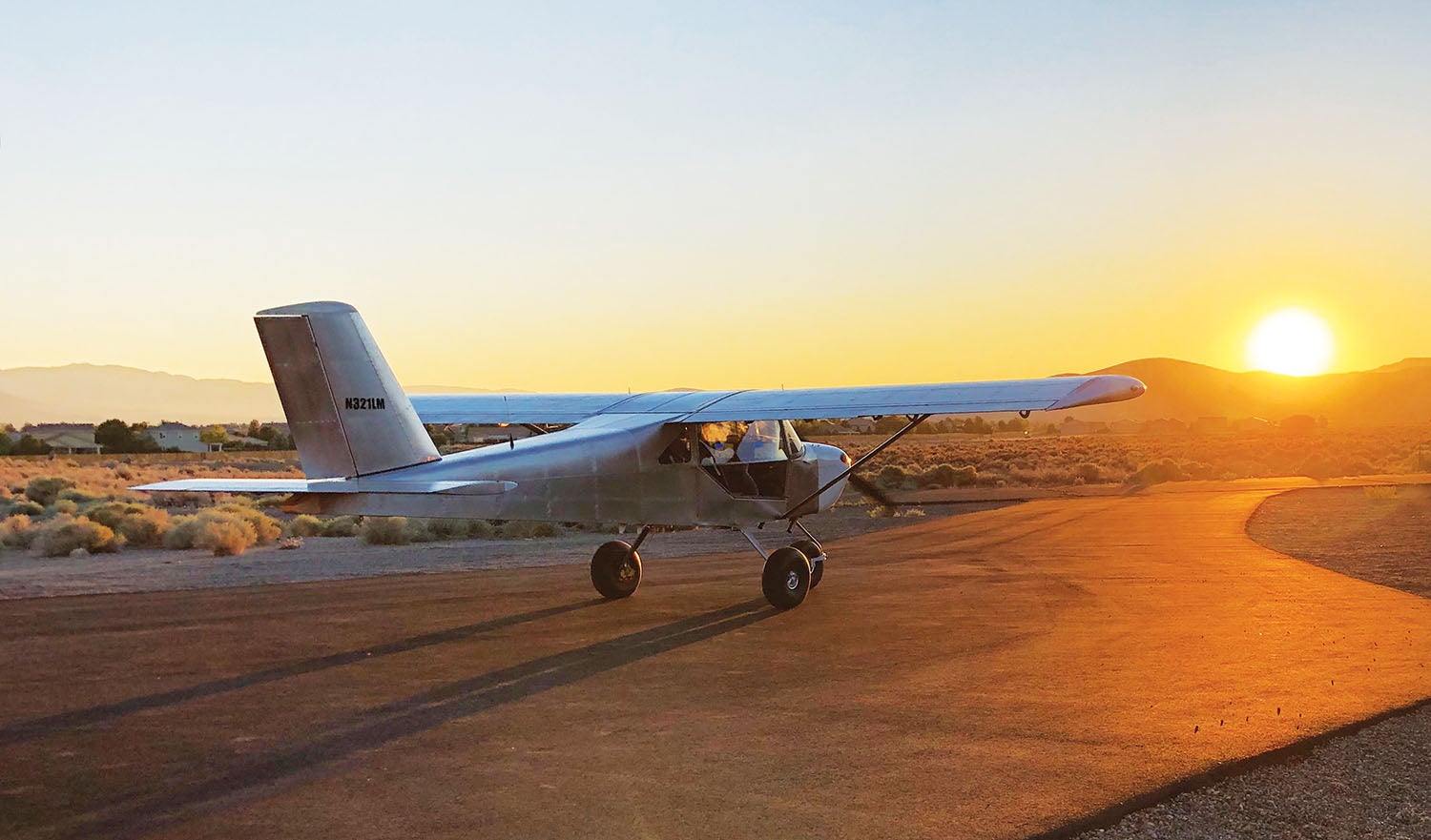 In our last installment of this build series, we had covered, through 12 installments, much of the building of our RANS S-21 Outbound as well as the logical culmination of all that work: first flight. Our neighbor, Paul Dye, committed the first three flights for us, which we documented int the KITPLANES® December 2021 issue. First flight, as every successful builder knows, is just the beginning of Phase I flight test.
In our last installment of this build series, we had covered, through 12 installments, much of the building of our RANS S-21 Outbound as well as the logical culmination of all that work: first flight. Our neighbor, Paul Dye, committed the first three flights for us, which we documented int the KITPLANES® December 2021 issue. First flight, as every successful builder knows, is just the beginning of Phase I flight test.
Our designated airworthiness representative (DAR) was Richard Dilbeck, or Dilly, who took great care with our inspection. In a “Post-It party” we held before the DAR arrived, others noted a few discrepancies, including a few bolts that were too short—the threads failed to protrude far enough through the locking nuts. Dilly agreed with that assessment and noted that we’d order the needed parts; he signed us off knowing that we would replace those bolts before flying. As you may recall, the first flights weren’t exactly uneventful, but the airplane flew well overall. Still, Phase I was going to involve significant tweaks to the airframe and getting a few systems to perform happily. Most builders can relate to that!
Dilly had given us a generous Phase I area for our 40-hour effort. We were to commit to the hours and at least 10 takeoffs and landings within a 150-mile radius of our home airport at Dayton, Nevada. The area was to exclude Reno and Fallon Naval Air Station’s airspace. This is a pretty large, rather sparsely populated area of high desert that also includes the Sierra Nevada mountain range to our west.
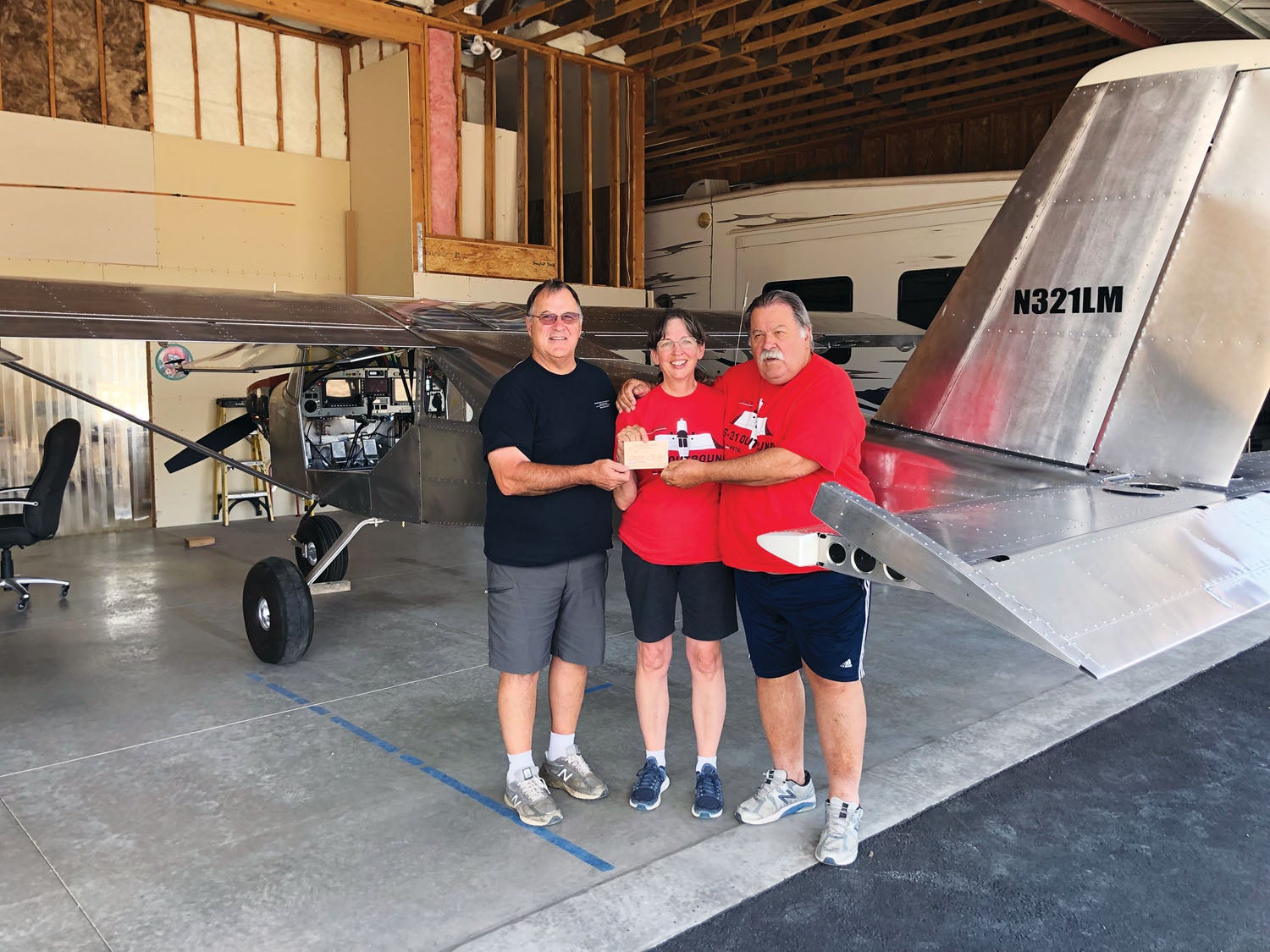
The Soft Science
I had discussed with Louise Hose, our neighbor and wife of Paul Dye, how they had managed responsibilities for first flights and during Phase I testing. She said that Paul advised that she never fly in the first 10 hours of flight because that is the time when the most serious issues may occur. I decided that was a prudent approach and wanted to stick by those guidelines.
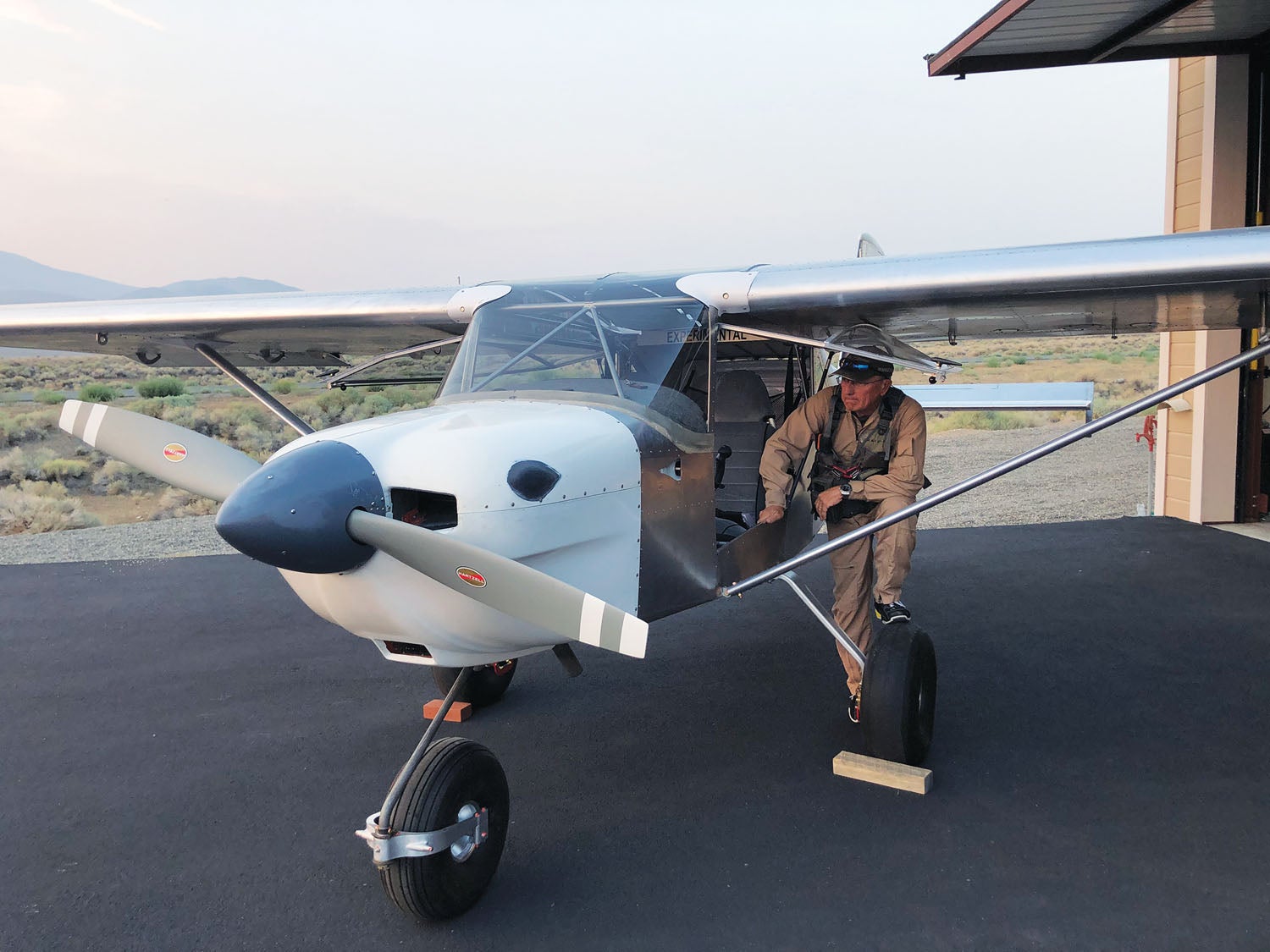
As mentioned, Paul committed our first flights. He had prepped and planned for the first flight by creating a five-page “First Flight Plan” based on EAA Test Card #2. There were specific roles for each individual involved (pilot and ground crew), communications, abort modes, weather criteria, emergency operations and the flight procedure he was to follow.
As it happened, it was a rather abbreviated flight that lasted only 22 minutes total (11 minutes in flight) due to multiple issues. In short, Paul noted high cylinder temps (not totally unexpected with a new engine), com-radio failure and multiple alarms. For the next three days, Mike chased gremlins. The radio not working was a rather easy one to chase down and ended up being a loose antenna wire. The alarms going off continuously didn’t make sense to Mike because he thought they were set properly. After discussion with Paul and the techs at GRT, it turns out that they were set up in the wrong part of the instrumentation at the EIS that tucks away under the dash as a drop-down panel and not set at the EFIS (glass panels). Alarms were reset to the appropriate level and can now be changed as needed on the EFIS.
Hot Times
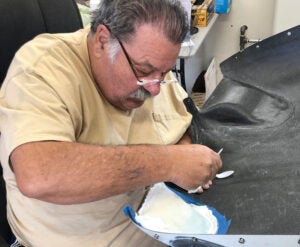
The high CHTs were a more involved problem. There were several avenues that Mike took to address this issue. Early on, he decided to contact Ross Farnham, who manufactures the SDS digital fuel injection and ignition system and is very knowledgeable about the system setup. Mike explained to Ross that we are in the process of breaking in the engine and described the issues of the high CHTs. Ross suggested retarding the ignition timing to 20° (normal being 25°) during break-in to keep the cylinders cooler. Mike also did more work to the cowl by making the intake ramps a bit bigger (more fiberglass work, oh boy) and enlarging the lower-cowl outlet. He also installed some air dams for cylinders 1 and 2 to help get more airflow to cylinders 3 and 4.
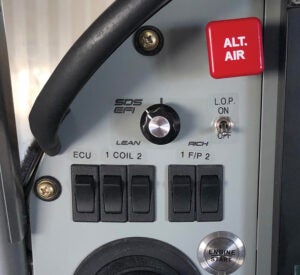
With all modifications for the pesky gremlins that interrupted our first flight completed, it was now time to consider the second flight. We concluded that the best decision was to have a rerun of the first flight as planned to get a good engine break-in, something Paul endorsed as a good plan of action. The second flight officially took place five days later after all noted items had been addressed.
Everything was ready and it was a great morning for testing. Our S-21 takes off so quickly, using very little runway, and climbs out strong. Our fixes to the com radio held, which was a relief. On the second flight, Paul leveled out at 5600 feet msl, which is not far above our field elevation of 4400 feet. He said that the alarms were still going off continuously and the CHTs were already all over 400° F with one at 429°. Still too hot! At least the oil temperature and pressure were good: 177° and 72 psi.
Since the SDS system is not yet dialed in to automatically change mixture based on engine speed, there is a small knob on the instrument panel to manually set the mixture to lean or richen as needed. Paul dialed it up from 10 o’clock to noon (richening), with the CHTs soon coming down, although three of the four were still just above 400°. Paul circled the runway, did some Figure 8s, richened the mixture to the 2 o’clock position and the CHTs continued down. A few minutes later, he richened it again—this time to the 3 o’clock position. Now the CHTs came down to 377, 350, 366 and 360. There we go!
Flying Qualities
It was now time to test the feel of the plane with slow flight and stalls. All flight controls remained responsive and the stalls were a “non-event” again at 49 mph. During the flight, Paul was able to communicate with a plane that was transitioning the area and verified that he could be seen on ADS-B. The other pilot confirmed so that was another step in the right direction! Total time for this flight was 0.9 hours, so the hope was that the engine was starting to get broken in at this time.
When briefing the flight, Mike and Paul reviewed where the alarms were set. Mike had not set alarms on the GRT-WS, which is in the center of the panel between the two GRT 10.1 Horizon displays. We use the WS to monitor the engine, which means we can leave the larger Horizon screens less cluttered with engine data. But it also needs to have its alarms set, too—a task that had been overlooked. Mike had quite the time chasing down all the appropriate places to set alarms with this panel setup we had.
After engine shutdown, Paul noticed that the ALT 1 field circuit breaker had popped. Paul and Mike did some brief troubleshooting and were unable to pinpoint the cause of the problem and grounded the plane until the source could be found. Since this plane is electronically dependent for flight (fuel injection and electronic ignition), it is imperative that the electrical system be squeaky clean of any issues!
Mike started researching what the causes of the popped CB could be through discussions on websites and phone conversations with B&C Specialty Products, makers of the voltage regulator. One idea was that there was a power surge at shutdown, causing the breaker to pop. We did testing with a Radio Shack voltmeter and changed up the ALT 1 & ALT 2 sequencing on the checklist to flip them off prior to shutdown and that seemed to help. Things seemed to be taken care of at this point.
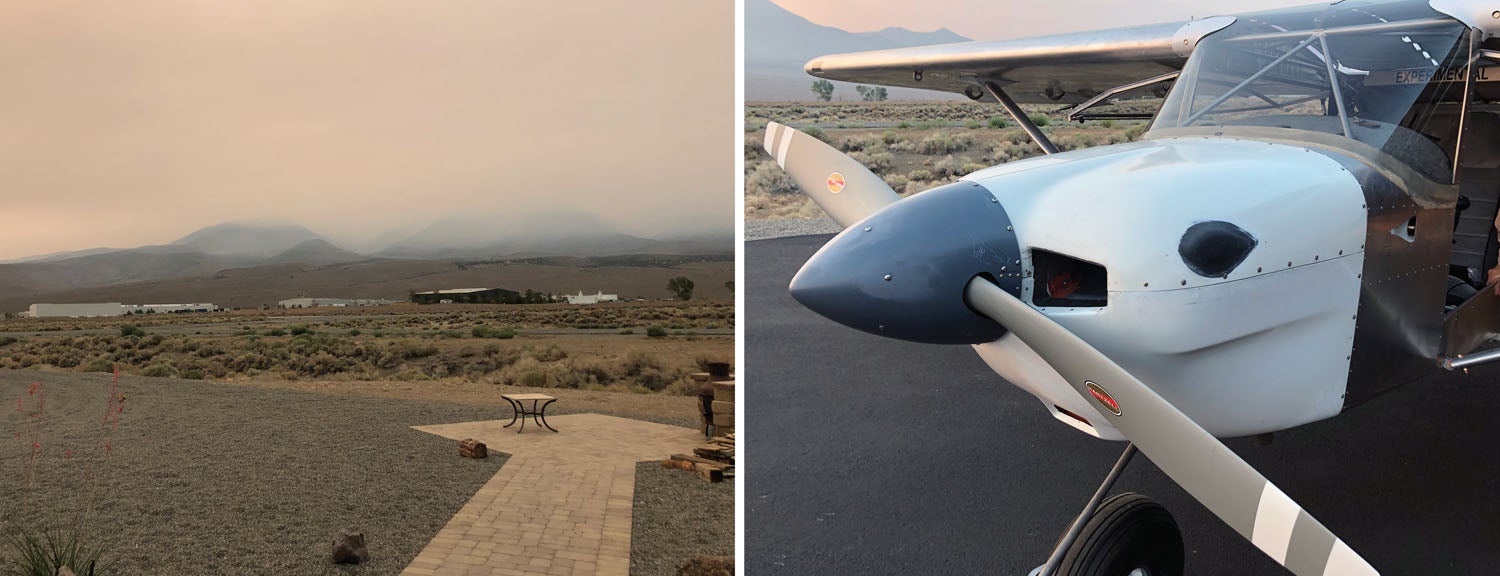
Almost Mike’s Turn!
Now that all seemed in order, Paul volunteered to go fuel up the plane at a nearby airport and bring it back for Mike’s first flight. (I think he likes flying the plane!) Upon returning to our airport, Paul made a no-flaps landing, which I noticed and thought was a bit unusual in the early stages of testing. Turns out, the flaps wouldn’t go down. There were no alarms, so that issue had been resolved. CHTs were now consistently below 400 in cruise and descent. Mike was able to track down the flap issue to the linear actuator (I call it the motor). He replaced the linear actuator and all was good with the flaps once again.
Finally, on August 26, Mike was able to make his first flight in the RANS. There had been so much smoke in the air with the fires in California that the visibility had been marginal at best. We waited until it appeared to be a satisfactory visibility day for him to fly, and he went for it. He had a strong takeoff and he wasn’t even up 1000 feet before he lost sight of Highway 50, which is a couple of miles to the north. He could only see straight down. He came around the pattern, never losing sight of the airport below him, and landed as soon as he could. That was not a good experience, to say the least! He did complain about “the damn doorknob” hitting him in the leg. The flight lasted only 12 minutes.
On September 4, the smoke gave us a bit of a break, so Mike was able to get in his “real” first flight. I was on the ground with the handheld radio that we would switch over to the “family channel” (122.75) so we could chat, and I documented the numbers as he called them out. Outside air temp was 77°, the hills around us were visible and the winds were at 8 mph straight down the runway. On climb-out, CHTs were 430, 404, 408 and 417. Not bad. At a cruise altitude of 7000 feet, CHTs were running 395, 365, 378 and 373. Again, not bad! He said the flight controls for pitch, yaw and roll all felt good. He also said the elevator is sensitive, and he had to keep some right rudder in for the plane to stay straight. But the batteries seemed to be charging just fine. The flight lasted half an hour. Mike was pretty happy with the way the plane handled, and there were no real surprises.
Flight Testing Continues
On September 7, Mike had the opportunity to go up again. He had adjusted the ignition timing back up from 20° to 25° where it should be and was watching the CHTs carefully during flight. We did a repeat with me on the ground with the handheld writing things down. On climb-out, CHTs were 437, 405, 418 and 420. At cruise, they were a bit higher (thanks to the SDS correctly leaning for cruise) at 407, 371, 392 and 381. He turned the mixture knob from the 10 o’clock to the 1 o’clock position, richening it, and they cooled a bit. Mike was happy with this performance. Even so, Mike wanted to open up the cowling a bit more.
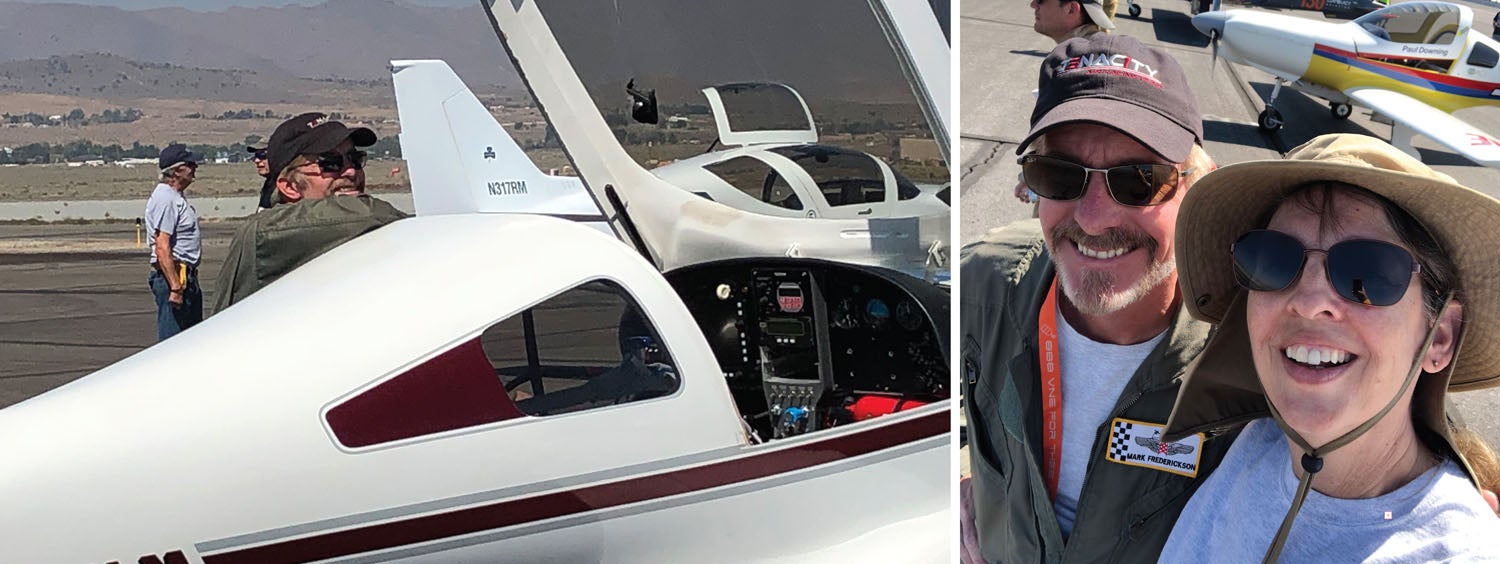
At this point in time, we have a total time on the plane of 4 hours! My unrealistic thoughts when we started Phase I were that we would have our 40 hours flown off by the end of summer. That didn’t happen. It was time for a break to the Reno Air Races for us, where we had the opportunity to crew for Mark Frederickson in Tenacity #31. We got to spend a week on the field and had a great time!
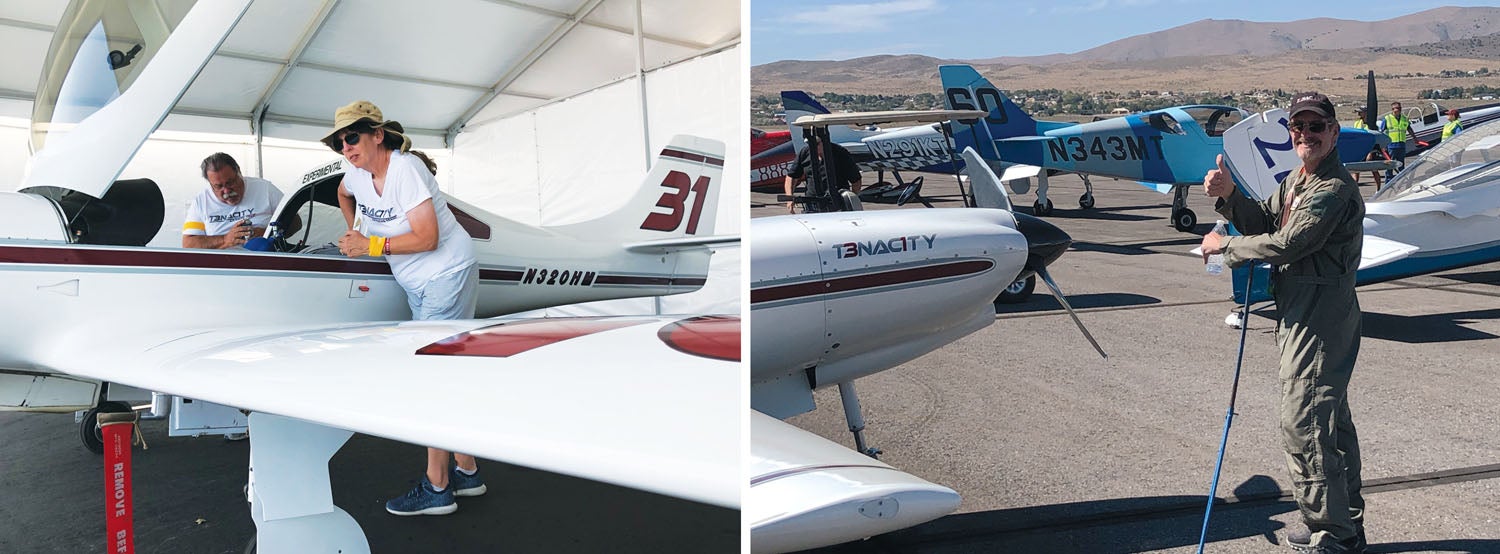
It was time to return to test flying on September 23. Mike was planning on doing EAA Test Card #6: wings-level stalls. He had installed “bump trim” (as suggested by Randy Schlitter). It’s just a piece of door weather seal about 10 inches long covered with electrical tape to the lower-left aft side of the rudder to fix the yaw mistrim. It worked quite nicely! Once up to altitude, Mike did a stall with no flaps at 51 mph, then half flaps at 47 mph and finally full flaps to 45 mph indicated. He would get it to the buffet point, but no real fallout. He then headed out over a dry lake that’s about 10 miles to the east of us to test out the autopilot. On briefing after he landed (a beautiful one, by the way!), he reported that the autopilot is really jerky and needs some work.
The following day, Mike planned to do EAA Test Card #4: rough pitot-static check, where you use your GPS ground speed compared to your indicated airspeed at four cardinal headings. He was planning on doing the entire testing and got up to 7500 feet, but it was too turbulent and windy to conduct the test. He didn’t get out early enough to catch the calmer air in the morning and ended up aborting the testing. Sometimes that happens.
On September 30, Mike had the right conditions to go out for the pitot-static test. He climbed to 7500 feet msl and stayed over the Dayton Valley so he was able to call out the speeds for me to record the data as he was testing. I made a nice little spreadsheet of the numbers, and he was satisfied that the pitot-static system was accurate. After the flight, he wanted to get some gas at Silver Springs Airport but had to abort due to the ALT 1 field circuit breaker popping in flight. Again! Mike figured that the breaker could be weak and a new one might take care of the problem.
A few days later, Mike went out with the plane to complete Test Card #5: longitudinal control, after he had replaced the field CB for the main alternator. But as he leveled off at 7500 feet, the new CB popped. The flight was aborted and he came in for a landing at Dayton after only 16 minutes in flight. This was getting very frustrating!
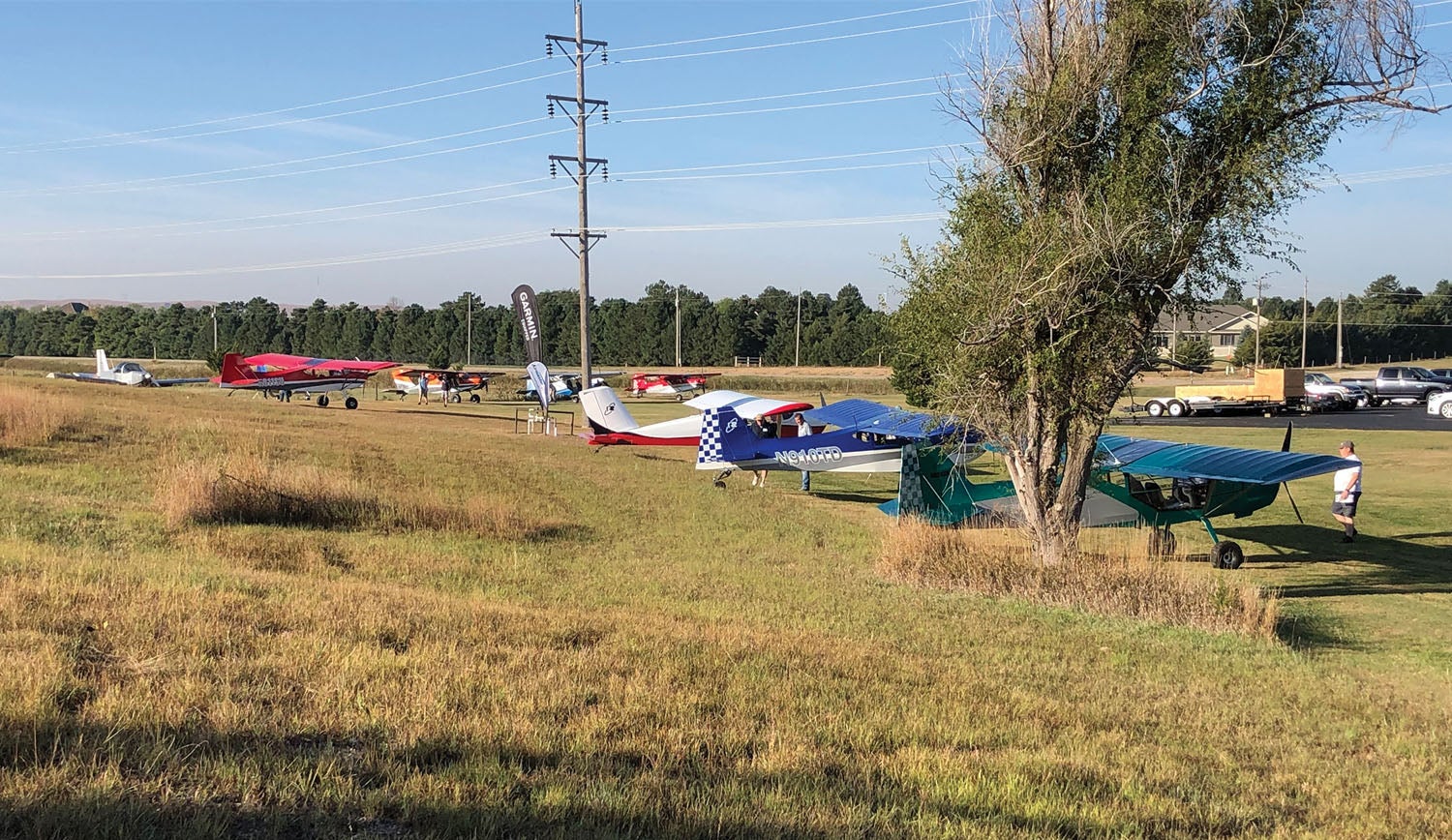
It just so happened that the weekend of October 9, RANS was having a fly-in at their factory in Hays, Kansas. Mike and I wanted so badly to fly the plane there. But we were well short of completing Phase I, so we made it a drive-in instead! A few extra days of travel for driving, but it was well worth the trip to be able to see some completed S-21s and get ideas from other builders. What interested me most was how people finished the interiors of their planes. I got lots of pictures of what others have done and have some great ideas of what I want to do for ours. It was also a great time to get to meet builders we have communicated with on the builders’ Facebook page. On the return trip from Kansas, we were able to spoil ourselves with a night in Moab, Utah, and spend the next morning going through Arches National Park.
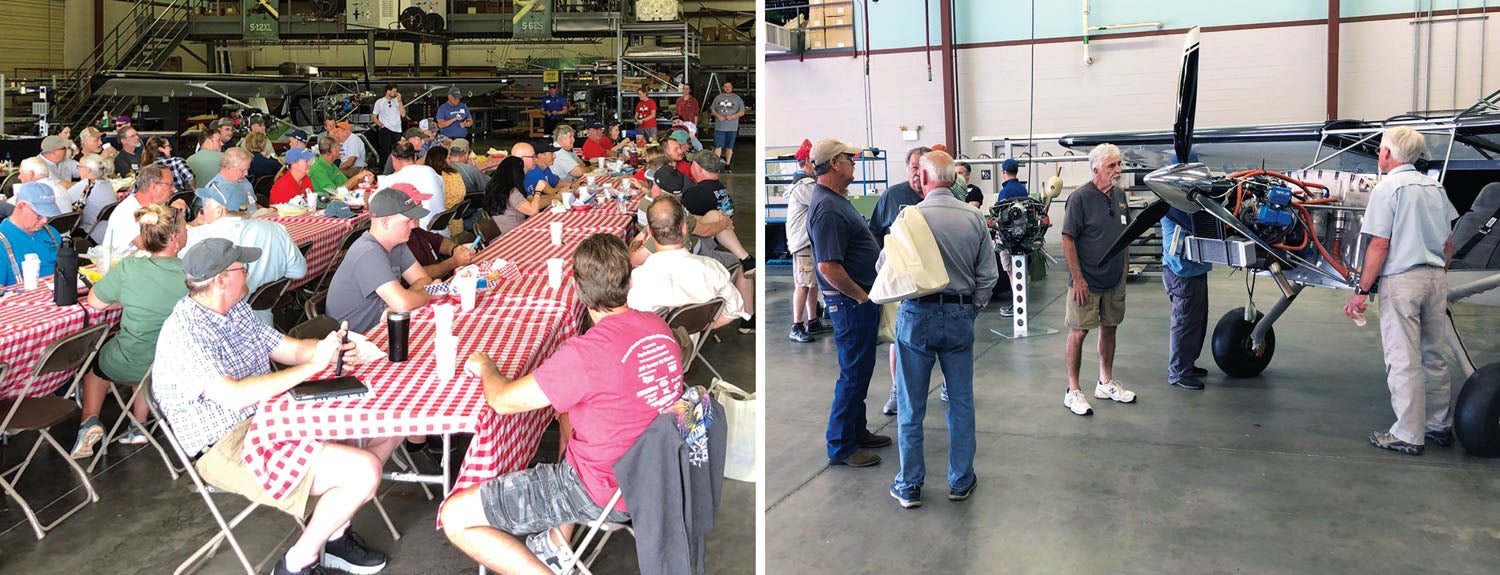
On October 19, Mike made a last-ditch effort to try to resolve the popping alternator-field CB by disabling the switch on the panel for ALT 1, thinking that the switch may be causing a voltage drop that was causing the breaker to pop. He had to drop the panel (good thing it is on hinges, which makes access easier) and disconnect the switch. He was going to take it out for a test flight to see if it would still pop and he probably only taxied 100 yards before it popped again! Very frustrating, to state it mildly.
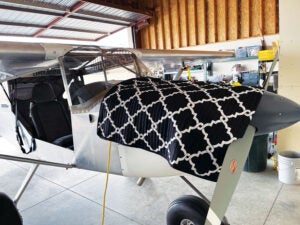
Getting to the Root
Mike was resisting the obvious issue because it would cost bucks to replace the alternator itself—at least he was following the smart path of fixing or replacing the inexpensive things first. Also, the tech at B&C—whose voltage regulator was on the airplane, not one of the company’s alternators—was not convinced the alternator was at fault. Like on many other homebuilts, we had an automotive-based alternator. Although a replacement, an actual B&C unit, was going to cost $400, I was of the mind to “just do it.” More time was spent ordering, waiting for the shipment and modifying wiring for the new alternator. The bracket supporting the alternator needed modification, too. Amazingly, we have not had the field cricuit CB popping again.
It was November 21 when he was finally able to get to Silver Springs for gas without the alternator field breaker popping. (There was, however, a little interruption in the test flying when we spent a week in Mexico, near Cancun, so Mike could walk his daughter down a sandy aisle to give her away as a bride to a wonderful man! We had a great time.)
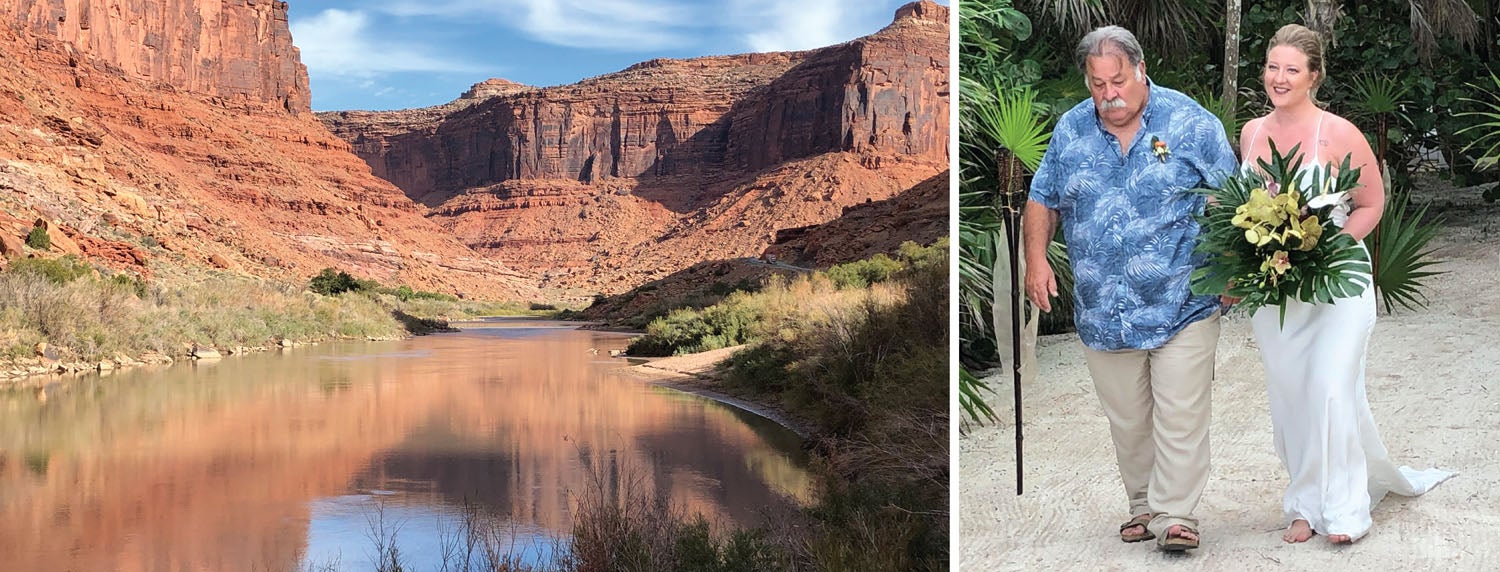
Back to flight testing. On November 23, Mike was able to complete Test Card #5: longitudinal control. He did the flight testing at a forward CG first, which revealed good control throughout the speed range. When he came back in, we loaded him up with 40 bottles of water in the baggage area for the aft-CG testing. His only note was that it wanted to pitch up a bit more, but there were no control issues.
Because we have electric pitch trim, Mike next wanted to do Test Card #18: runaway electric pitch trim. On November 28, Mike was able to complete this testing. He did the testing at Vh—that’s maximum level flight speed, or 147 mph true—which calls for adding pitch trim in one-second intervals and noting the effort to maintain altitude. As expected, stick forces increased with more trim movement, but it was all controllable. Mike did say he would not want to have to try to fly with three seconds of mistrim for very long. He repeated the test at Vx (80 mph) and the S-21 was still controllable. The last was an approach with full flaps at 65 mph, which again proved that three seconds of trim would not put the airplane in an unmanageable condition.
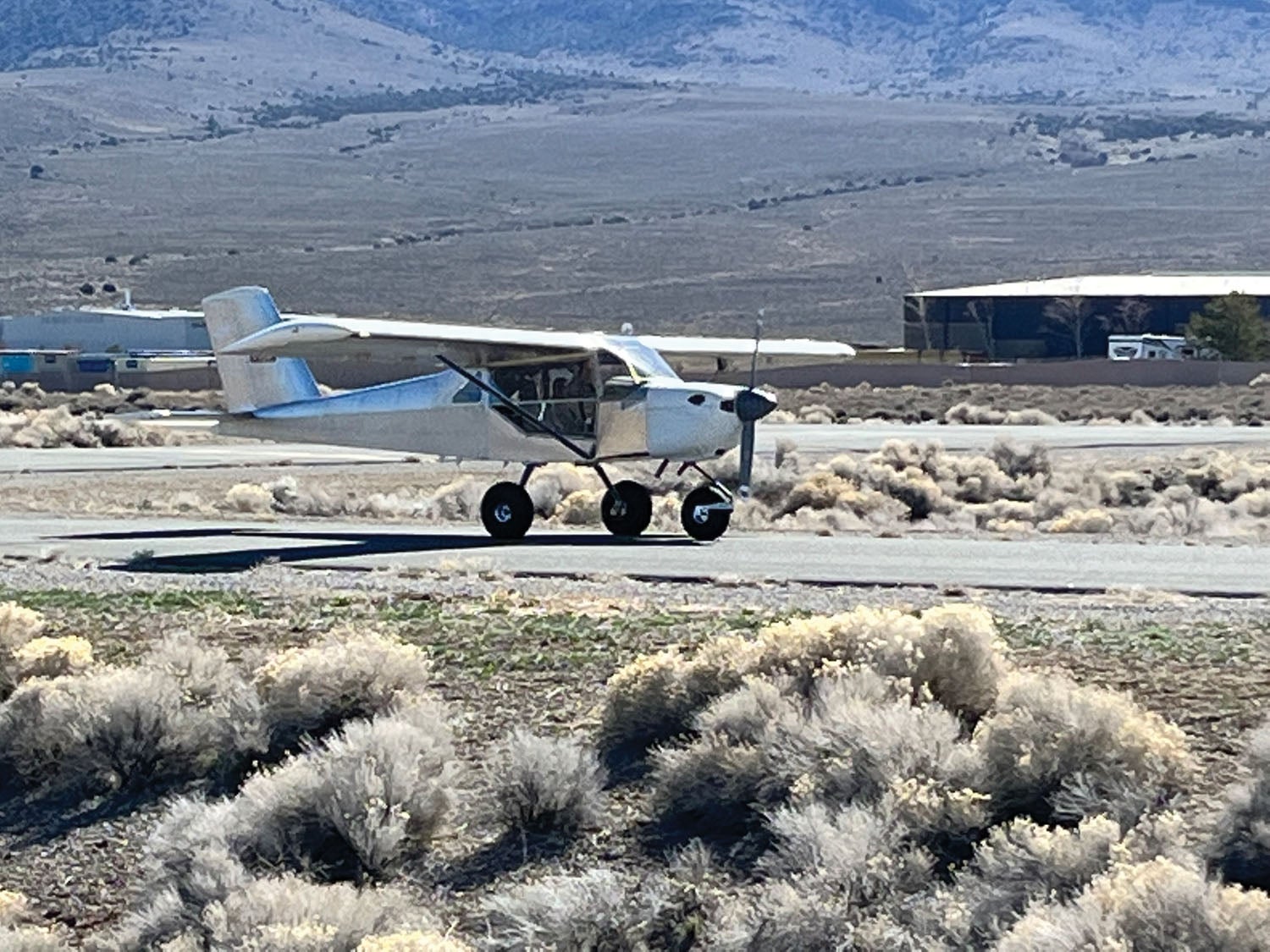
On December 1, Mike flew the plane to Minden, Nevada, to get the transponder certified. With the completion of this flight, he officially passed the 10-hour mark that I had been patiently awaiting. Now it was time for me to evaluate not only the plane’s readiness for me to fly it but also my readiness to fly it.
This time had been a long time coming, nearly five months to the day since acquiring the airworthiness certificate, and we only had 10 hours. I would never have believed that if you had told me how long it was going to be to get 10 hours in at the beginning of this Phase I adventure. It took much patience and perseverance to finally get to this point. There was much beyond our control (smoke, winds and prescheduled vacations) that ate up time, but some of the biggest frustrations for me were when something was broken and we had to order parts and wait for them to arrive. Sometimes there is nothing you can do to make the process move along quicker, so you need to be able to stick with it and stay safe. Use good judgment and, as I was told by a wise neighbor, “Phase I is a time that you can expect the unexpected.”
Next up: I’ll tell you what it’s like to fly this RANS S-21 from my point of view.














